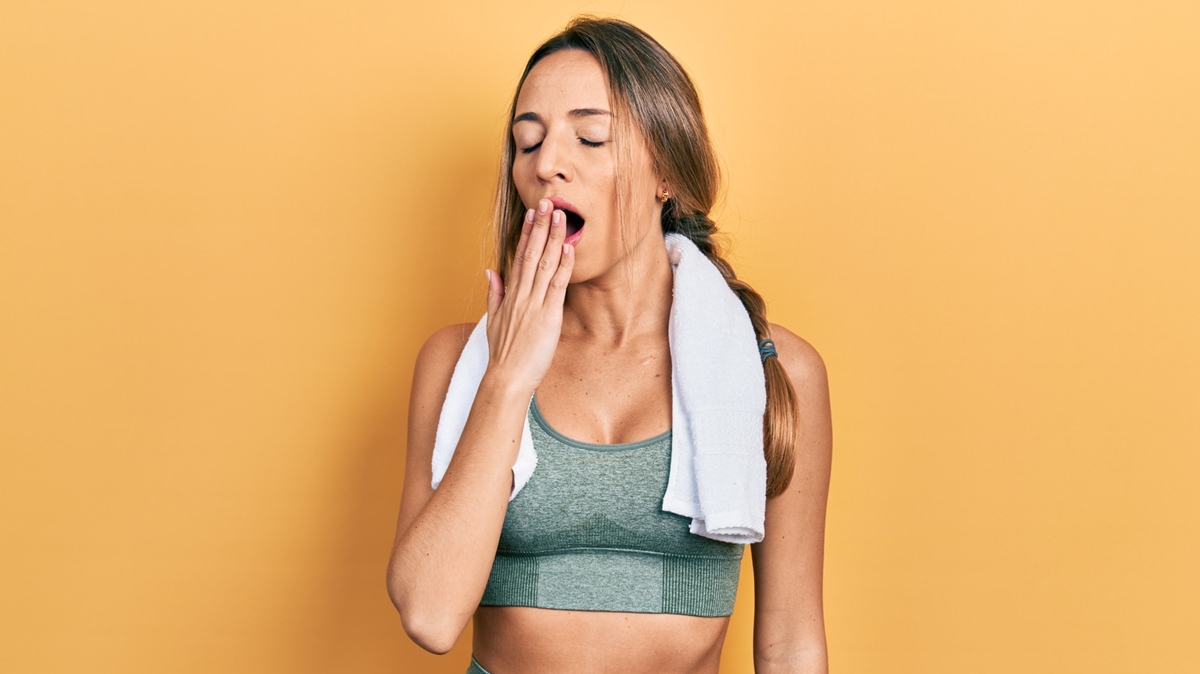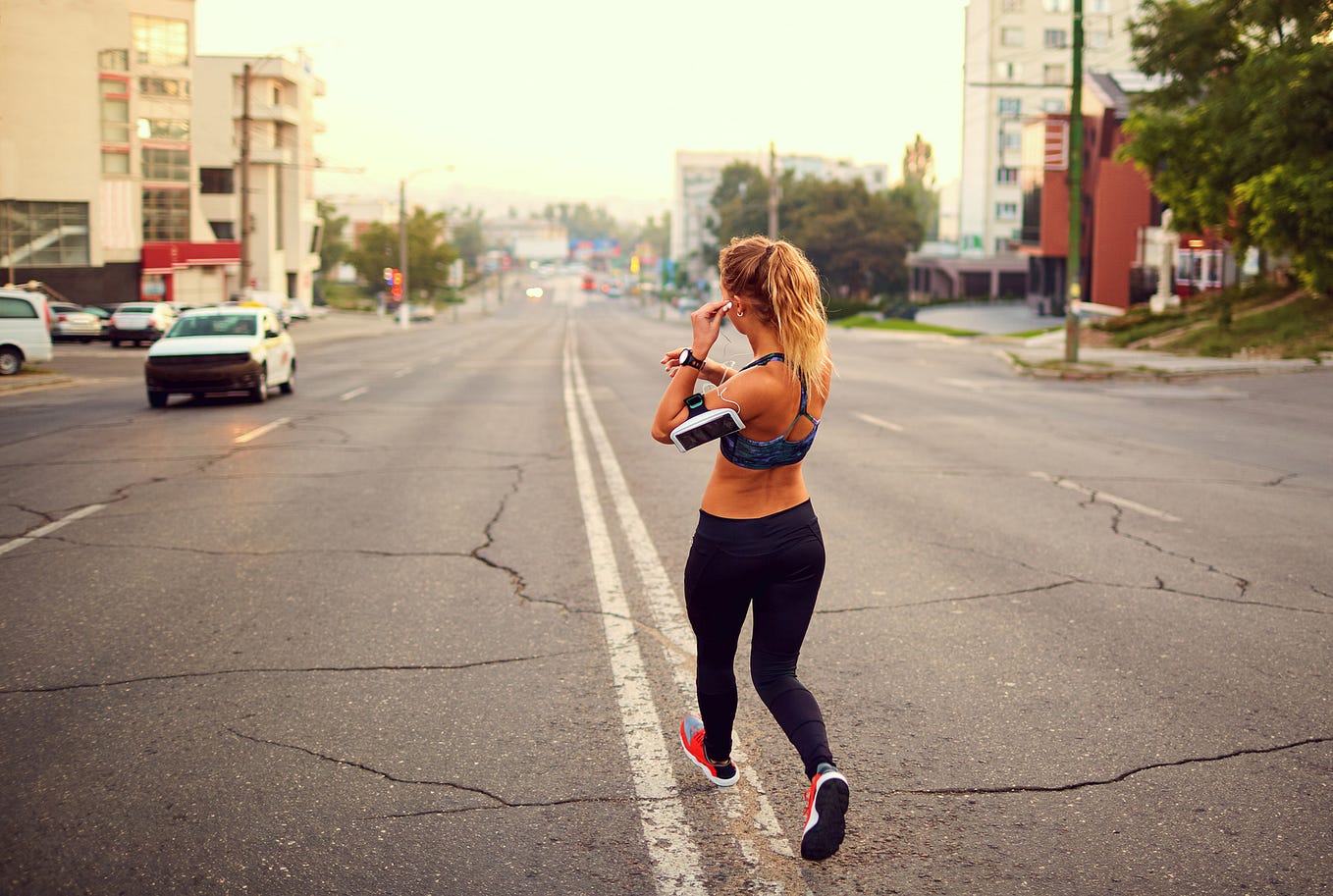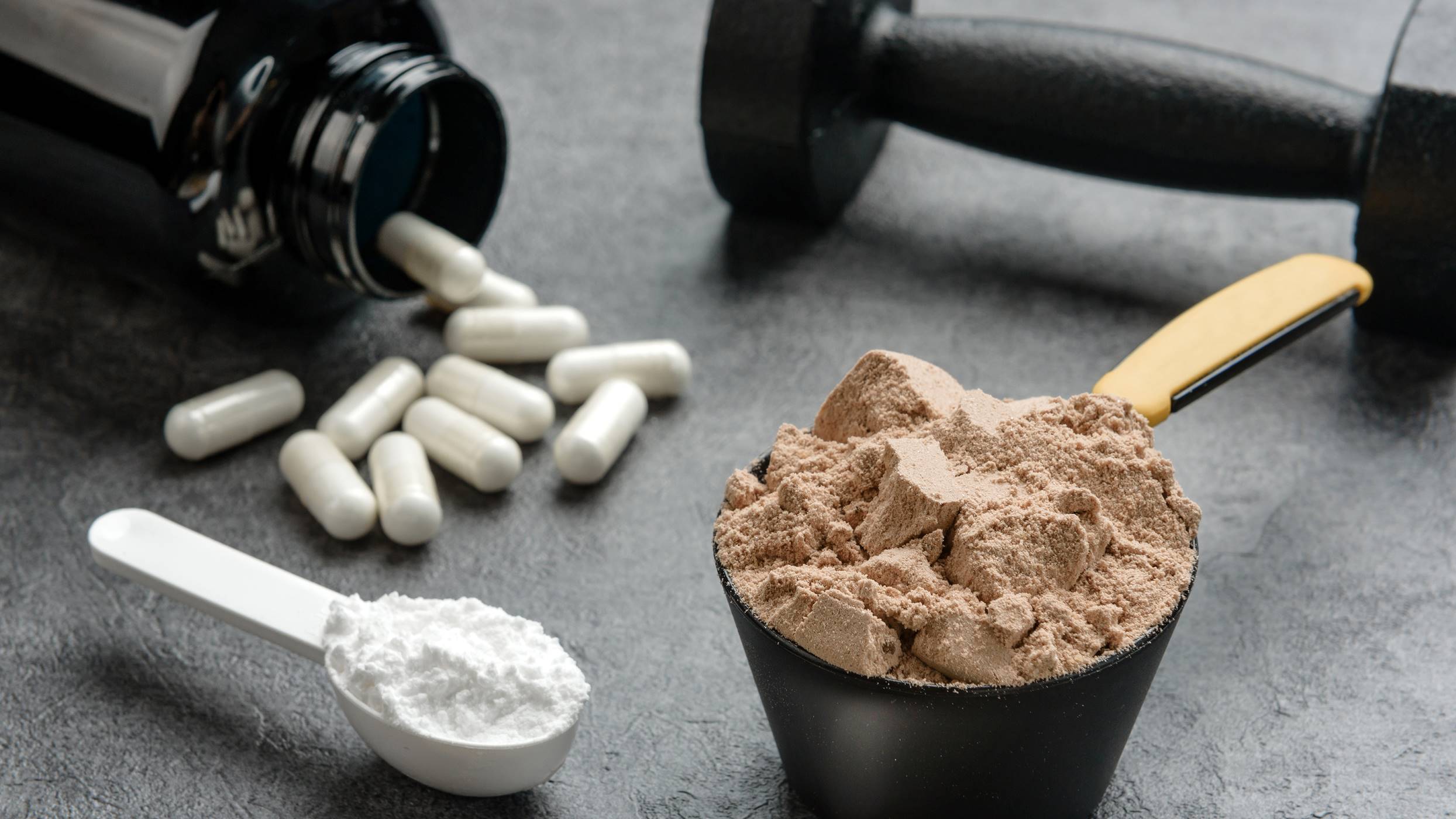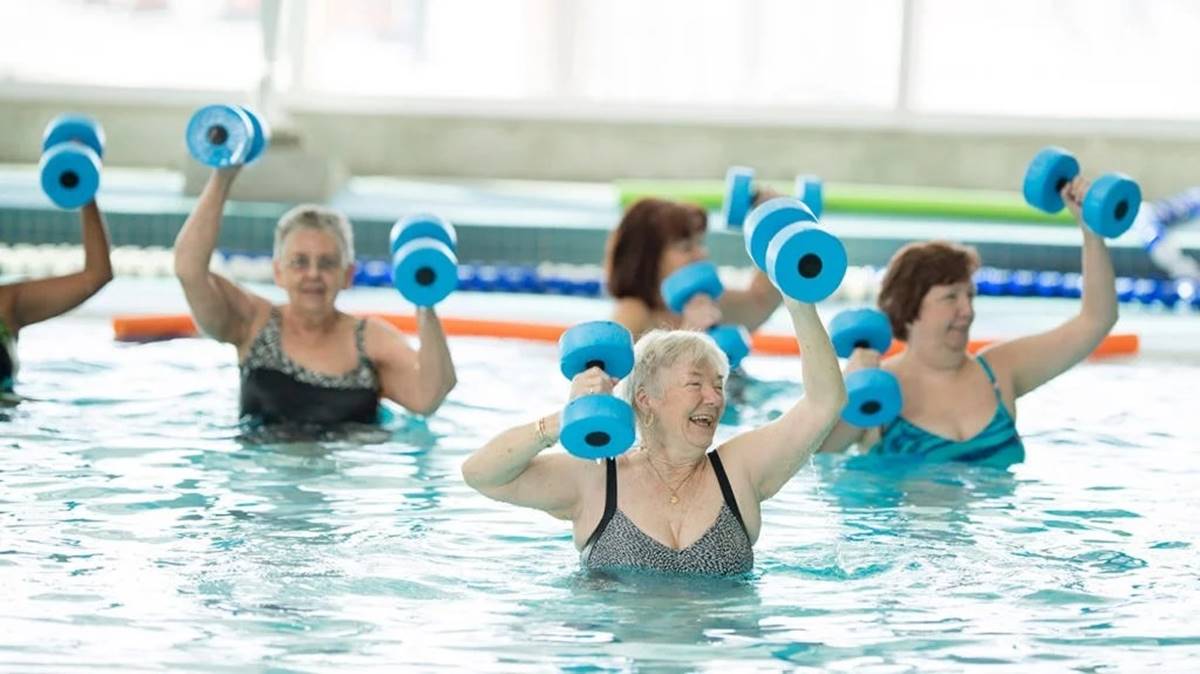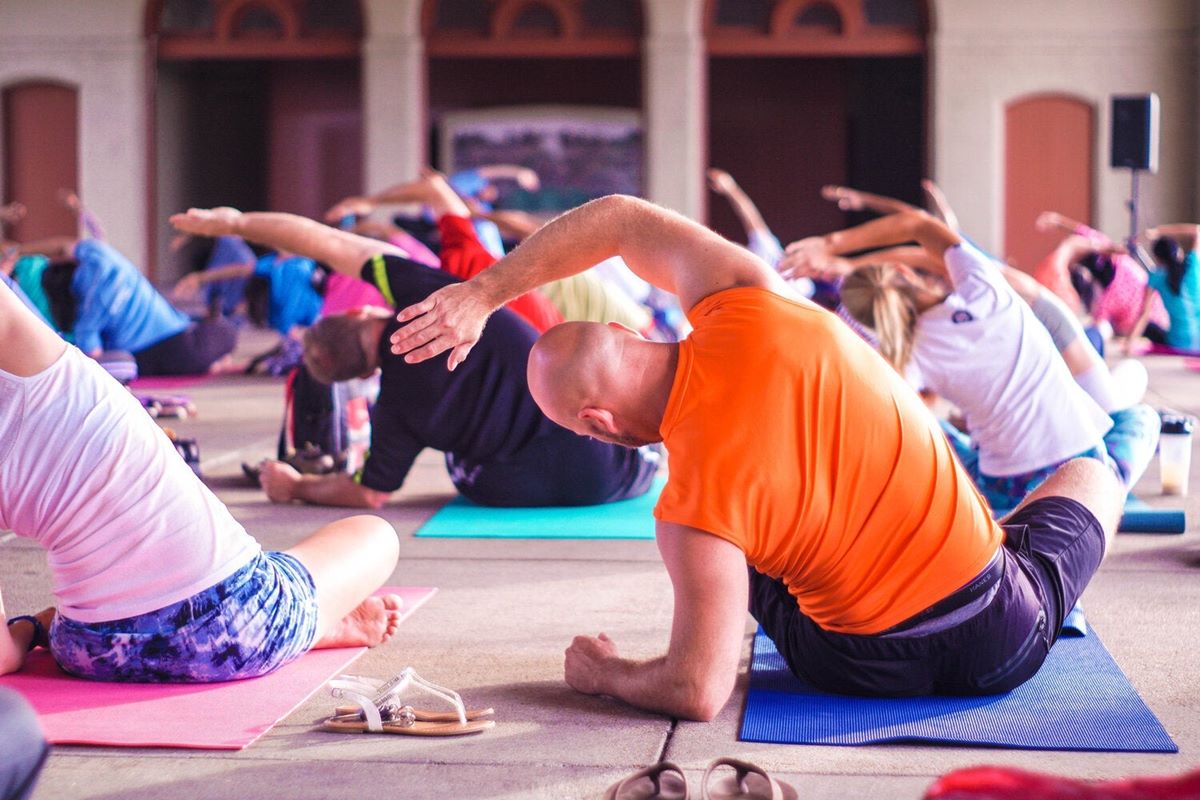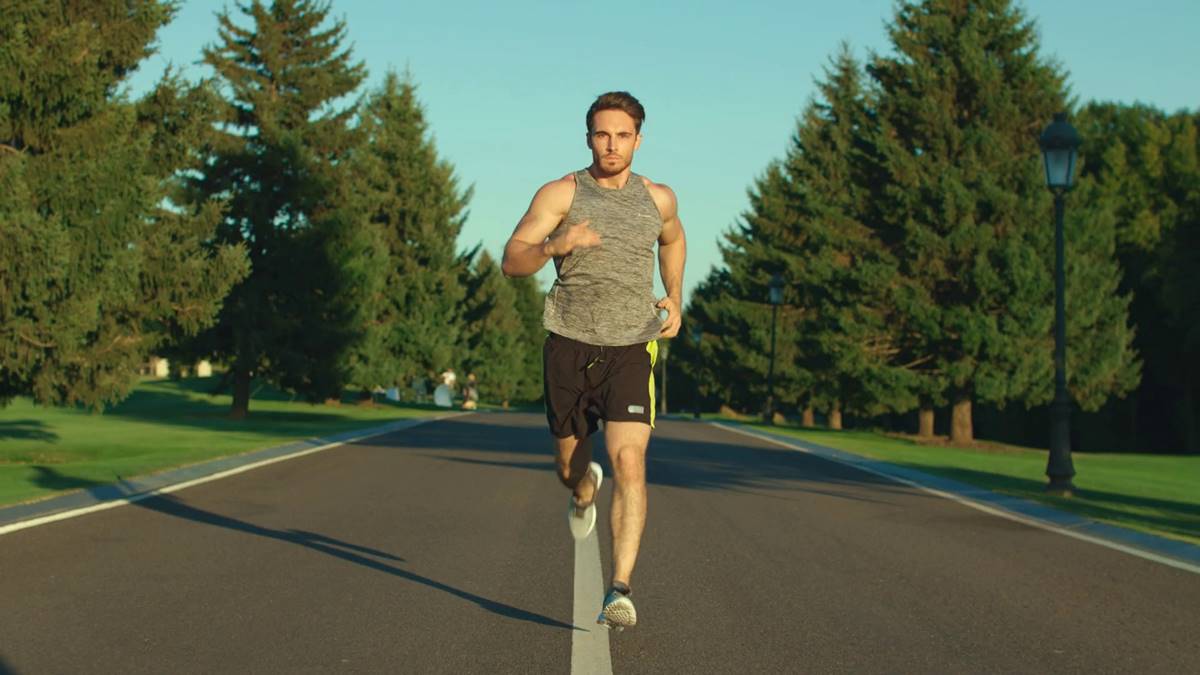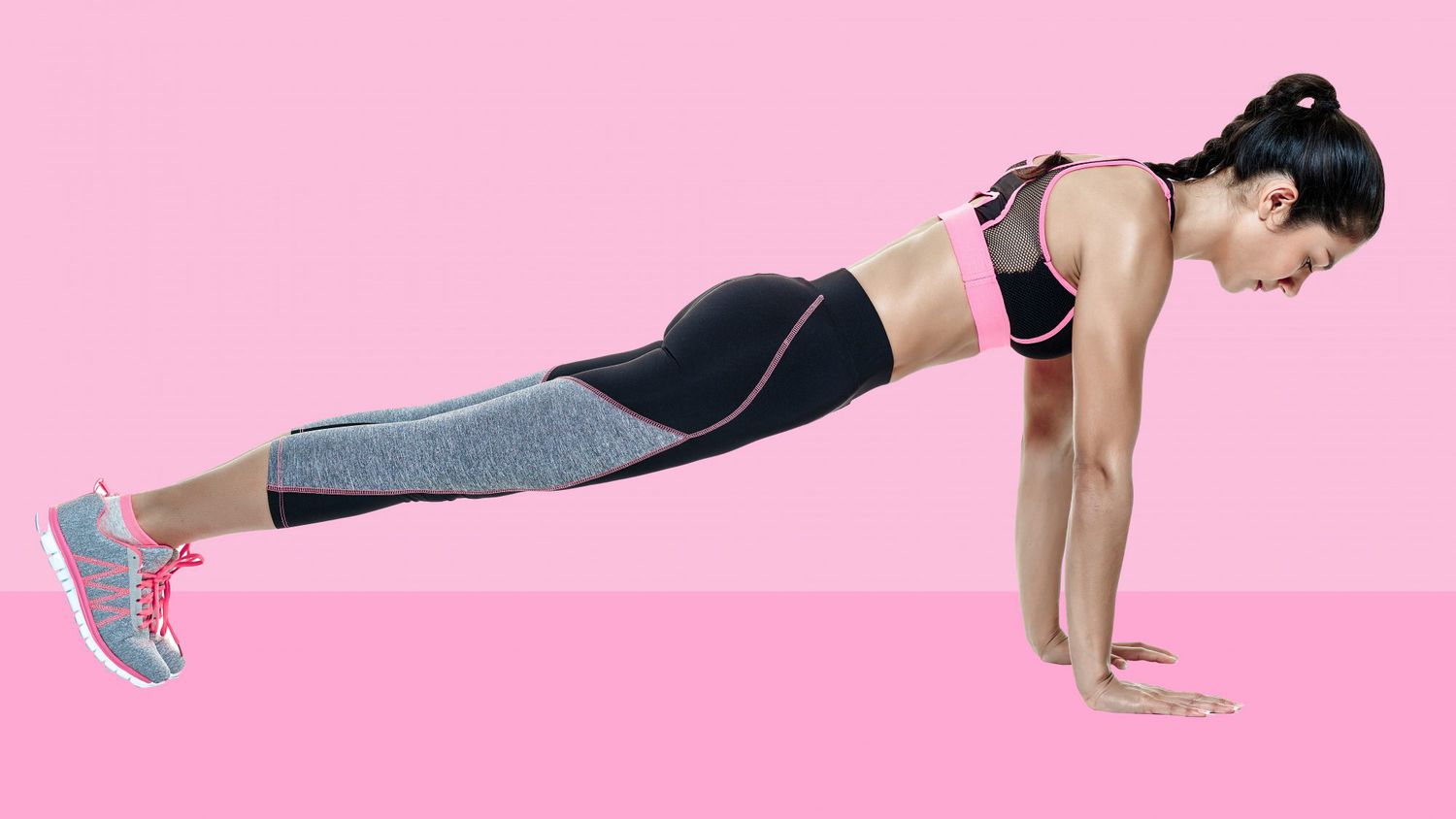Home>Misc>Featured>When We Exercise Why Do We Breathe Harder
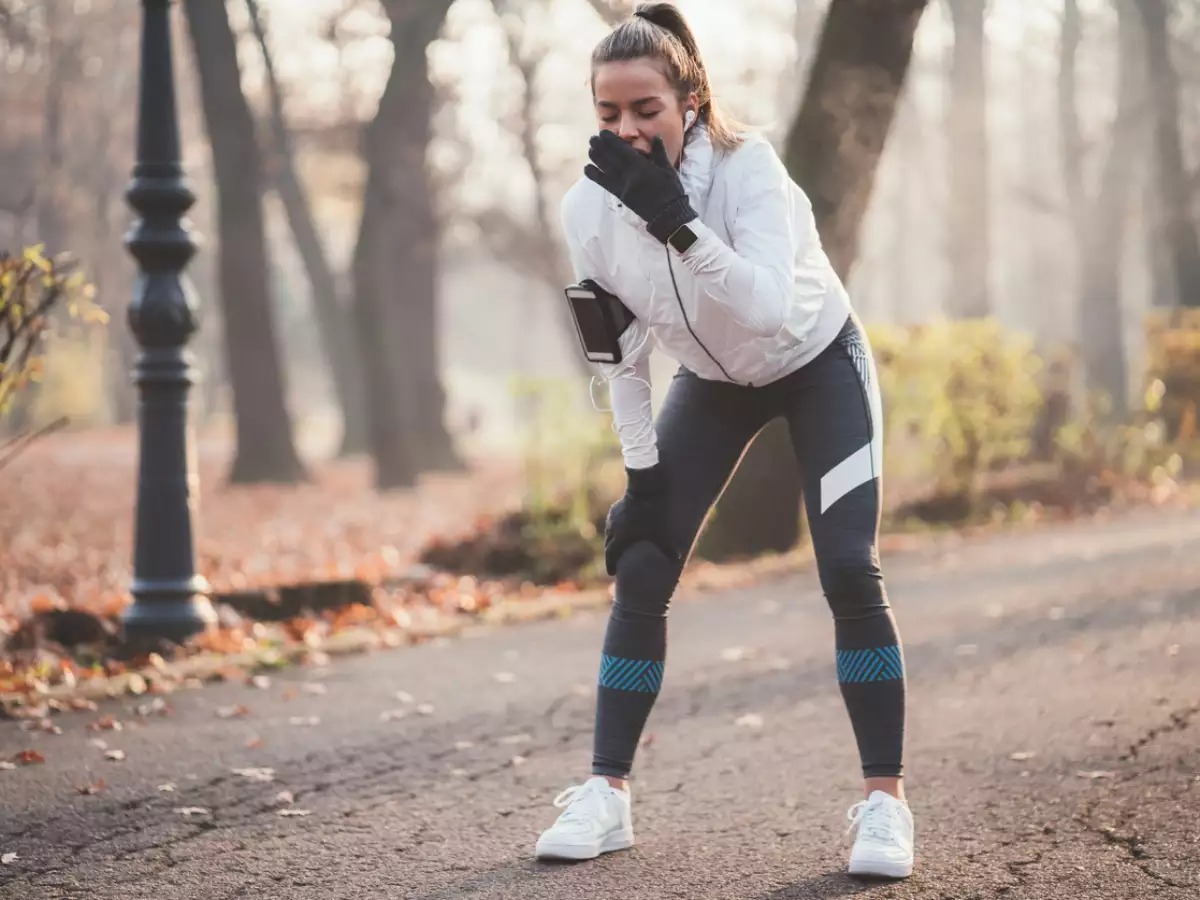

Featured
When We Exercise Why Do We Breathe Harder
Published: October 3, 2023
Discover why breathing becomes more intense during exercise and the physiological reasons behind it. Explore this featured article to understand the role of breathing in physical activity.
Introduction
When we engage in physical exercise, one noticeable phenomenon is that we begin to breathe harder. It’s an automatic response that serves a vital purpose: to meet the increased demand for oxygen by our body during physical activity. In this article, we will delve into the fascinating process of why we breathe harder during exercise and explore the role of the respiratory system in facilitating this response.
Exercise plays a crucial role in maintaining our overall health and well-being. Whether it’s a brisk walk, a challenging workout, or a friendly soccer match, physical activity helps keep our bodies strong, improves cardiovascular health, helps manage weight, and enhances mental well-being. But have you ever wondered why we breathe harder when we exercise? The answer lies in our body’s need for oxygen.
The respiratory system, comprised of the lungs, airways, and respiratory muscles, is responsible for the exchange of oxygen and carbon dioxide in our bodies. During exercise, the demand for oxygen increases to fuel the working muscles, and thus, the respiratory system works harder to meet this demand.
Oxygen plays a vital role in energy production. It is necessary for the breakdown of glucose and fatty acids, which are the main sources of fuel for our muscles. When we exercise, our muscles require more energy, and subsequently, more oxygen. In response to this increased demand, the body triggers a series of physiological changes that enable us to take in more oxygen and deliver it to our working muscles efficiently.
On the other hand, as our muscles generate more energy, they produce a byproduct called carbon dioxide. Accumulation of carbon dioxide in the muscles and bloodstream can be detrimental to our health. Therefore, it is essential to remove this waste product from our body. The respiratory system plays a crucial role in this process, as it helps eliminate excess carbon dioxide by increasing the breathing rate and depth.
Overall, understanding why we breathe harder during exercise can help us appreciate the intricate workings of our body and the remarkable capabilities of our respiratory system. In the following sections, we will explore in more detail the factors that drive us to breathe harder during exercise and the benefits of this physiological response.
Importance of Exercise
Exercise is not just a leisure activity; it is an essential component of a healthy lifestyle. Engaging in regular physical activity offers numerous benefits for our overall well-being. From improving physical fitness to enhancing mental health, exercise plays a crucial role in maintaining a high quality of life.
One of the key benefits of exercise is its impact on cardiovascular health. Regular exercise helps strengthen the heart and improves its ability to pump blood efficiently. This leads to a lower resting heart rate, reduced blood pressure, and a decreased risk of developing heart disease. Furthermore, exercise promotes the growth of new blood vessels, ensuring an adequate supply of oxygen and nutrients to all our body’s tissues.
In addition to its cardiovascular benefits, exercise also supports weight management. When we engage in physical activity, we burn calories, which helps us maintain a healthy weight or achieve weight loss goals. Regular exercise, combined with a balanced diet, can contribute to maintaining a healthy body mass index (BMI) and preventing obesity, which is associated with numerous health conditions.
Exercise is also known to boost mood and mental well-being. When we exercise, our body releases endorphins, which are natural chemicals that promote feelings of happiness and reduce stress and anxiety. Regular physical activity has been shown to improve symptoms of depression and enhance overall mental health.
Moreover, exercise strengthens muscles and bones, preventing conditions such as osteoporosis and age-related muscle loss. It improves flexibility, balance, and coordination, reducing the risk of falls and injuries. Exercise also promotes better sleep, leading to improved energy levels and cognitive function during the day.
In addition to the physical and mental benefits, regular exercise also fosters social connections and improves overall quality of life. Participating in group exercise classes, team sports, or outdoor activities provides opportunities for social interaction and can help reduce feelings of loneliness and isolation.
With all these remarkable benefits, it is clear that exercise should be an integral part of our daily routine. Whether it’s a brisk walk, a dance class, or a session at the gym, finding an activity that we enjoy and can stick to is key to reaping the long-term rewards of regular exercise.
The Respiratory System
The respiratory system is a complex network of organs and tissues responsible for the exchange of oxygen and carbon dioxide in our bodies. It consists of the lungs, airways, and respiratory muscles, working together to ensure the efficient intake of oxygen and removal of carbon dioxide.
The process begins with inhalation, as we breathe in air through the nose or mouth. The air passes through the nasal cavity, where it is filtered, moistened, and warmed before reaching the lungs. From the nasal cavity, it travels down the throat and enters the trachea, a tube-like structure that connects the throat to the lungs.
The trachea branches into smaller tubes called bronchi, which further divide into even smaller bronchioles. These bronchioles end in tiny air sacs called alveoli, which are the primary site of oxygen and carbon dioxide exchange. The alveoli are surrounded by a dense network of blood vessels, allowing for efficient transfer of gases between the lungs and bloodstream.
The respiratory muscles, including the diaphragm and intercostal muscles, play a crucial role in the process of breathing. The diaphragm is a dome-shaped muscle located below the lungs, separating the chest cavity from the abdominal cavity. When we inhale, the diaphragm contracts and moves downward, creating a larger space in the chest cavity. This movement, along with the contraction of the intercostal muscles between the ribs, expands the lungs, allowing air to enter.
In contrast, during exhalation, the diaphragm and intercostal muscles relax, causing the lungs to deflate and air to be expelled. The process of inhalation and exhalation is controlled by the respiratory centers in the brainstem, which receive input from chemoreceptors that monitor the levels of oxygen, carbon dioxide, and pH in the bloodstream.
Overall, the respiratory system plays a vital role in ensuring a continuous and efficient supply of oxygen to the body’s tissues and the removal of carbon dioxide, which is considered a waste product. Through the intricate network of airways, gas exchange occurs, allowing oxygen to enter the bloodstream and be transported to every cell in the body, while carbon dioxide is eliminated from the body through exhalation.
The Role of Oxygen
Oxygen is a fundamental element necessary for life. It plays a vital role in the processes that occur within our cells to produce energy. When we breathe in, oxygen enters our body and is transported through the respiratory system to the working muscles and tissues.
One of the primary functions of oxygen is its involvement in aerobic respiration, which is the process by which cells use oxygen to convert fuel, such as glucose and fatty acids, into energy in the form of adenosine triphosphate (ATP). This energy production is essential for various bodily functions, including muscle contraction, protein synthesis, and nerve impulses.
During exercise, the demand for oxygen increases significantly as our muscles require more energy to perform the physical activity. The increased oxygen demand is met by a series of physiological changes driven by the respiratory system. The lungs take in more air with each breath, and the oxygen is delivered to the bloodstream, where it binds to hemoglobin in red blood cells for distribution throughout the body.
Once oxygen reaches the working muscles, it diffuses into the muscle cells, where it participates in the breakdown of glucose and fatty acids. This process, known as aerobic metabolism, yields a greater amount of ATP compared to anaerobic metabolism, which occurs without the presence of oxygen. Aerobic metabolism is preferable for sustained exercise as it is more efficient and produces less lactic acid, reducing muscle fatigue and enhancing endurance.
In addition to its role in energy production, oxygen is crucial for maintaining proper cellular function and promoting tissue repair. It aids in the removal of waste products, including carbon dioxide, which is a byproduct of energy production. Oxygen also supports the immune system by enhancing the activity of white blood cells, helping to fight infection and promote healing.
Furthermore, oxygen plays a vital role in maintaining the pH balance of the blood. During exercise, muscles produce large amounts of carbon dioxide and lactic acid, which can lead to an increase in acidity. Oxygen helps counteract this acidity by combining with protons, reducing the acidity and maintaining a normal pH level.
Overall, the role of oxygen in our body during exercise is multifaceted and indispensable. It fuels energy production, supports cellular function, aids in waste removal, enhances immune function, and maintains pH balance. Understanding the significance of oxygen highlights the importance of breathing harder during exercise to facilitate the intake and delivery of this vital element.
Increased Oxygen Demand during Exercise
During exercise, our body experiences an increased demand for oxygen to support the heightened metabolic activity and energy requirements of the working muscles. This higher oxygen demand is a direct result of the increased workload placed on the muscles during physical activity.
When we engage in exercise, our muscles contract and relax repeatedly to generate movement. This contraction is fueled by the breakdown of glucose and fatty acids, which release energy in the form of ATP. In order to sustain this energy production, a continuous supply of oxygen is necessary.
The increased demand for oxygen during exercise is driven by several factors. Firstly, as the intensity of exercise increases, more muscle fibers are recruited, resulting in a greater need for oxygen to support their increased activity.
Secondly, exercise requires the muscles to work harder, leading to an increased breakdown of fuel molecules. This higher rate of fuel metabolism leads to a greater production of carbon dioxide and the subsequent removal of waste products.
Thirdly, the body increases its core temperature during exercise, a process known as thermogenesis. This rise in temperature stimulates the respiratory centers in the brain, causing an increase in breathing rate and depth to enhance oxygen uptake and heat dissipation.
Moreover, the cardiovascular system responds to exercise by increasing the heart rate and pumping more blood to the working muscles. This increased blood flow ensures a more efficient delivery of oxygen to the muscles, enabling them to continue contracting and producing energy.
Furthermore, as exercise progresses and the body’s energy stores are depleted, the reliance on aerobic metabolism becomes more pronounced. Aerobic metabolism, which requires oxygen, becomes the dominant energy production process, leading to an even higher demand for oxygen.
By breathing harder during exercise, we allow for a greater intake of oxygen into the lungs. The increased breathing rate and depth facilitate the exchange of gases in the alveoli of the lungs, ensuring that oxygen is efficiently transferred into the bloodstream and transported to the working muscles.
In summary, the increased demand for oxygen during exercise is a result of various factors, including increased muscle activity, fuel metabolism, thermogenesis, cardiovascular response, and reliance on aerobic metabolism. By breathing harder, our body can meet this higher oxygen demand, allowing us to perform physical activity and sustain energy production for a prolonged period of time.
The Role of Carbon Dioxide
While oxygen plays a crucial role in exercise, carbon dioxide, often seen as a waste product, also serves important functions during physical activity. As our muscles work harder, they produce carbon dioxide as a byproduct of energy metabolism. The respiratory system plays a vital role in removing this carbon dioxide from the body to maintain a proper balance.
One of the key functions of carbon dioxide during exercise is its role in regulating the pH, or acidity, of the blood. As physical activity increases, the breakdown of glucose increases, resulting in the production of more carbon dioxide. This excess carbon dioxide can affect the pH balance, making the blood more acidic. To counteract this, the respiratory system increases the breathing rate and depth, facilitating the removal of carbon dioxide and maintaining a normal pH level.
In addition to its role in pH regulation, carbon dioxide also affects the release of oxygen from hemoglobin, the protein responsible for transporting oxygen in the bloodstream. Carbon dioxide acts as a catalyst for the release of oxygen from hemoglobin, enabling oxygen to be delivered to the working muscles more efficiently. This phenomenon, known as the Bohr effect, ensures that oxygen is readily available where it is needed most during exercise.
Furthermore, carbon dioxide plays a vital role in controlling the diameter of blood vessels, a process known as vasodilation. During exercise, carbon dioxide levels increase in the working muscles, causing nearby blood vessels to dilate. This vasodilation allows for a greater blood flow to the muscles, supplying them with the necessary oxygen and nutrients for optimal performance.
Moreover, respiratory muscles, such as the diaphragm and intercostal muscles, are also affected by carbon dioxide levels. As carbon dioxide accumulates in the bloodstream, it triggers the urge to breathe and stimulates the respiratory muscles to contract more forcefully. This results in increased breathing rate and depth, allowing for more carbon dioxide to be eliminated and oxygen to be replenished.
In summary, carbon dioxide, often considered a waste product, plays essential roles during exercise. It helps regulate the pH balance of the blood, facilitates the release of oxygen from hemoglobin, promotes vasodilation for increased blood flow, and stimulates the respiratory muscles to ensure efficient elimination of carbon dioxide. Understanding the role of carbon dioxide highlights the interconnectedness of the respiratory system and its importance in maintaining a balanced and optimal environment during physical activity.
The Breathing Rate and Depth
The breathing rate and depth, also known as respiratory rate and tidal volume, respectively, refer to the frequency and amount of air we inhale and exhale per minute during exercise. These factors play a crucial role in meeting the increased oxygen demand and removing carbon dioxide from our body.
During exercise, the body increases its breathing rate and depth to allow for a higher intake of oxygen. The breathing rate refers to the number of breaths taken per minute, while the tidal volume represents the amount of air inhaled or exhaled with each breath.
The increase in breathing rate is primarily driven by the respiratory centers located in the brainstem. These centers receive input from chemoreceptors, which detect changes in the levels of oxygen, carbon dioxide, and pH in the blood. As exercise intensifies and more oxygen is required, the chemoreceptors send signals to the respiratory centers, triggering an automatic increase in the breathing rate.
The depth of breathing, or tidal volume, also increases during exercise to accommodate the higher oxygen demand. With each breath, a larger amount of air is inhaled to ensure a higher intake of oxygen into the lungs. The diaphragm and intercostal muscles contract more forcefully, enabling a greater expansion of the lungs and increasing the amount of air exchanged with each breath.
The combination of increased breathing rate and depth allows for a more efficient exchange of gases in the lungs. It ensures that oxygen is taken in at a faster rate to meet the heightened demand and that carbon dioxide, a waste product of exercise, is eliminated effectively.
Both the breathing rate and depth are influenced by various factors, including the intensity of exercise, fitness level, and lung capacity. As exercise becomes more strenuous, the body responds by increasing the breathing rate and depth to provide the necessary oxygen to sustain the increased energy demands.
Physical fitness also plays a role in determining the breathing rate and depth during exercise. Individuals who are more aerobically fit often have a lower resting breathing rate and can achieve higher tidal volumes during exercise. This is due to improved lung function, better oxygen-carrying capacity, and more efficient gas exchange in the lungs.
It is worth noting that the breathing rate and depth during exercise can be influenced by psychological factors as well. Anxiety, stress, or a high level of perceived exertion can lead to an increase in the breathing rate and altered breathing patterns.
Overall, the breathing rate and depth adapt during exercise to meet the increased oxygen demand and remove carbon dioxide efficiently. This dynamic response of the respiratory system ensures that the working muscles receive the oxygen they need, enabling us to perform physical activity with optimal efficiency and endurance.
Factors Affecting Breathing during Exercise
The process of breathing during exercise is influenced by several factors that can affect the breathing rate, depth, and overall efficiency of the respiratory system. Understanding these factors can provide insights into how our body responds and adapts to physical activity.
One of the primary factors affecting breathing during exercise is the intensity of the activity. As exercise intensity increases, the body requires more oxygen to fuel the working muscles, resulting in an automatic increase in breathing rate and depth. Higher-intensity exercises, such as sprinting or high-intensity interval training, will generally elicit a greater breathing response compared to low-intensity activities like walking.
Another factor influencing breathing during exercise is the duration of the activity. Prolonged exercise may lead to fatigue in the respiratory muscles, affecting their ability to contract forcefully and sustain a high breathing rate. As a result, the breathing rate may gradually decrease over time, even as the exercise continues.
In addition to exercise intensity and duration, environmental conditions can also impact breathing during physical activity. High temperatures, humidity, and altitude can all affect the efficiency of gas exchange in the lungs and alter breathing patterns. In hot and humid environments, the body may need to increase the breathing rate to dissipate heat and maintain proper core temperature. At higher altitudes, where the concentration of oxygen is lower, the body may respond by increasing respiratory rate and depth to compensate for reduced oxygen availability.
The fitness level of an individual also plays a significant role in breathing during exercise. Well-trained individuals generally have a more efficient respiratory system, allowing for a lower resting breathing rate and higher maximal oxygen uptake (VO2 max). This means that trained individuals can achieve higher levels of exertion before reaching their maximal breathing capacity.
Furthermore, emotional factors, such as anxiety or stress, can affect breathing patterns during exercise. Increased feelings of anxiety can lead to shallower or more rapid breathing, reducing the efficiency of gas exchange and impairing overall performance. Techniques like mindful breathing and relaxation exercises may help individuals regulate their breathing and optimize performance during exercise.
Finally, certain medical conditions or respiratory disorders can impact breathing during exercise. Individuals with asthma, for example, may experience shortness of breath or wheezing, requiring them to adjust their exercise routine and use prescribed medications as necessary. It is crucial for individuals with pre-existing respiratory conditions to work closely with healthcare professionals to manage their exercise regimen and ensure optimal lung function.
In summary, several factors, including exercise intensity, duration, environmental conditions, fitness level, emotional state, and underlying respiratory conditions, can influence breathing patterns during exercise. By understanding these factors, individuals can make informed decisions about their exercise routine and take appropriate measures to optimize their breathing efficiency and overall performance.
The Benefits of Breathing Harder during Exercise
When we exercise, our body naturally responds by breathing harder to meet the increased demand for oxygen. Although it may feel challenging at times, there are several benefits to breathing harder during exercise that contribute to our overall physical fitness and performance.
One of the primary benefits of breathing harder during exercise is the efficient delivery of oxygen to the working muscles. By increasing the breathing rate and depth, our lungs are able to take in larger amounts of oxygen, which is then transported by the bloodstream to the muscles. This enhanced oxygen delivery supports aerobic metabolism, allowing for the efficient breakdown of glucose and fatty acids to generate energy.
Breathing harder also promotes the removal of carbon dioxide, a waste product of exercise, from the body. As we breathe harder, the increased exhalation helps eliminate excess carbon dioxide, preventing a buildup that can hinder performance. This removal of carbon dioxide helps maintain the proper pH balance in the blood and enables the muscles to continue functioning optimally during exercise.
Engaging in regular, high-intensity exercise that necessitates breathing harder can improve lung capacity and respiratory muscle strength. The respiratory muscles, such as the diaphragm and intercostal muscles, become more conditioned and efficient with regular training. This can result in increased lung capacity, allowing for greater oxygen uptake and improved endurance during physical activity.
Breathing harder and deeper during exercise can also enhance core stability and overall body control. The forceful contraction of the diaphragm and intercostal muscles assists in stabilizing the core, enabling more efficient movement and enhancing athletic performance in various sports and activities.
Furthermore, breathing harder during exercise can have positive effects on mental well-being. The increased oxygen intake stimulates the release of endorphins, also known as “feel-good” chemicals, in the brain. This can lead to an improved mood, reduced stress levels, and enhanced mental focus and clarity during exercise.
Incorporating breathing techniques, such as deep belly breathing or diaphragmatic breathing, while breathing harder during exercise can also have additional benefits. These techniques can help activate the parasympathetic nervous system, promoting relaxation and reducing the stress response. They can also improve respiratory efficiency, decrease respiratory effort, and enhance overall breathing mechanics.
Overall, breathing harder during exercise provides essential benefits that contribute to our overall physical fitness and performance. It facilitates the delivery of oxygen to the working muscles, aids in the efficient removal of carbon dioxide, improves lung capacity and respiratory muscle strength, enhances core stability, and promotes mental well-being. By embracing the challenge of breathing harder, we can optimize our exercise experience and reap the rewards of improved health and performance.
Conclusion
The act of breathing harder during exercise is a natural and important response of our body to meet the increased demand for oxygen. It allows for efficient oxygen uptake, enhances aerobic metabolism, and facilitates the removal of carbon dioxide, optimizing our physical performance. Understanding the role of the respiratory system and the factors that affect breathing during exercise provides valuable insight into our body’s intricate mechanisms.
Exercise holds immense importance for our overall health and well-being. It strengthens our cardiovascular system, helps manage weight, improves mental health, and enhances overall quality of life. Breathing harder during exercise plays a vital role in supporting these benefits.
The respiratory system, comprised of the lungs, airways, and respiratory muscles, ensures the exchange of oxygen and carbon dioxide in our bodies. It adapts during exercise, increasing the breathing rate and depth to deliver oxygen more efficiently and remove waste products effectively.
Oxygen, a fundamental element, is crucial for energy production and maintaining cellular function. Breathing harder during exercise enables the uptake and delivery of oxygen to the working muscles. Carbon dioxide, often considered a waste product, plays a crucial role in regulating pH balance, enhancing oxygen release from hemoglobin, promoting vasodilation, and stimulating the respiratory muscles.
Various factors influence breathing during exercise, including exercise intensity, duration, environmental conditions, fitness level, emotional state, and underlying respiratory conditions. By understanding these factors, individuals can make informed decisions about their exercise routine and optimize their breathing patterns.
The benefits of breathing harder during exercise are numerous. It leads to efficient oxygen delivery, promotes carbon dioxide removal, improves lung capacity and respiratory muscle strength, enhances core stability, and provides mental well-being. Embracing the challenge of breathing harder allows us to improve our physical fitness, performance, and overall quality of life.
So, the next time you find yourself breathing harder during exercise, embrace it as a sign that your body is working hard to support your physical activity. Appreciate the intricate workings of your respiratory system and the remarkable capabilities it possesses. By breathing harder, you are fueling your body with oxygen, removing waste products, and optimizing your performance. Keep breathing, keep exercising, and enjoy the countless benefits that physical activity brings.

